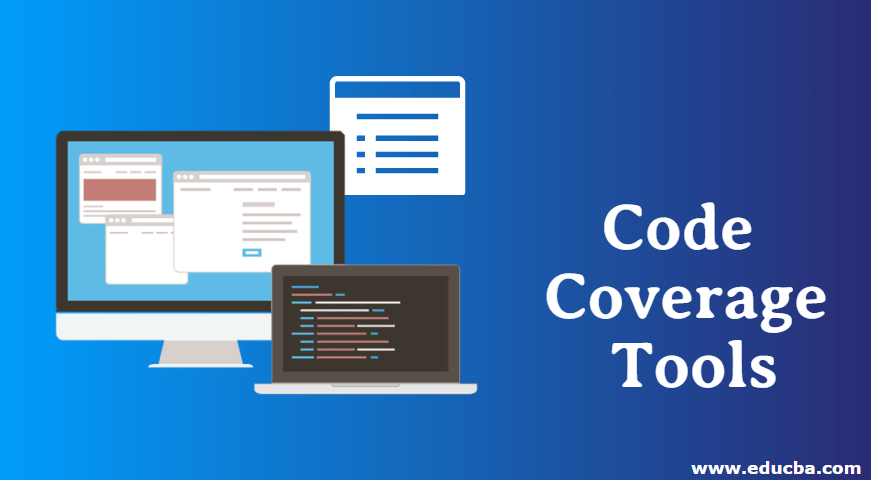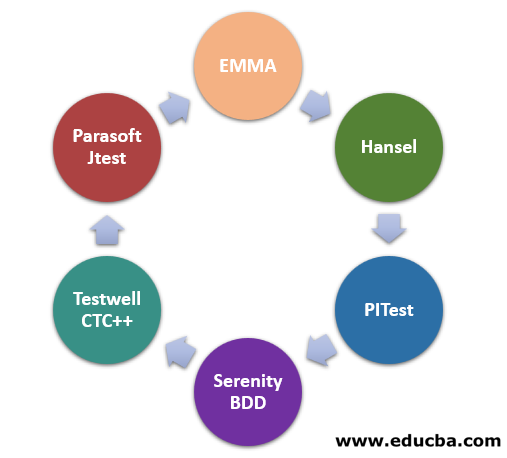Updated March 18, 2023

Introduction to Code Coverage Tools
Code coverage tools are a measure of how many statements, block or line of your code are tested with automated tests in your suite. The quality of your QA efforts is an essential metric for understanding. So, the code coverage shows you that automated tests do not cover much of your application and are thus vulnerable to defects. Usually, the coverage of code is calculated by percentages — more closely than 100%, the better. And if you are trying to prove your higher-up’s check coverage, software coverage tools are useful.
Over the years, many tools have been created to satisfy the code coverage needs of any software development project, both commercial and Open source whether a single developer has a side-project at home or a company with a large DevOps team, or has a start-up QA, there is a code coverage tool for every requirement.
Code coverage tools for many programming languages and many popular QA instruments are available. These are integrated with construction tools such as Maven, Ant, and Gradle CI tools such as Jenkins, project management tools such as Jira, and a number of other tools for the development of applications.
Top 6 Code Coverage Tools
Given below are the top 6 code coverage tools:
1. EMMA
- Emma was released in 2005 and developed by Vlad Roubtsov. Emma is first. one of software protection devices, the oldest and most common. Search for application coverage tools in Google, and EMMA shows up.
- So, it supports many kinds of coverage like method, class, block, and line EMMA trial coverage of Java applications. It is possible to run EMMA on the fly or offline. EMMA is not actively maintained and does not support the current Java version despite its popularity and matured feature set.
- It is still widely used, however, and its legacy continues in the numerous instruments and products it has inspired.
2. Hansel
- Hansel is an extension of JUnit which adds code to the test set. Most of Hansel’s source code comes from the above-mentioned Gretel but Hansel is JUnit-compatible, which Gretel does not.
- Hansel leaves developers aware of how much code a test is to cover beyond the typical code coverage tool. The programming language of Hansel is java and it was developed by Niklas Mehner.
3. PITest
- For Java and JVM, PITest performs mutation tests that are declared to be the “gold standard test coverage. For each line, statement or branch of code, the majority of tools for the coverage codes listed here are test coverage.
- This means that they can only indicate which code lines have not been tested. Mutation tests can, however, not only show you how many code lines are tested, but how well your automated bug tests are. PITest does so by changing your code and performing the modified code unit tests. If after code change the unit test fails, the test is useful.
- However, if the unit test is not unsuccessful, the code change has not been detected and must, therefore, be changed. PItest is integrated and opensource with Eclipse, IntelliJ, and Maven. The programming language of the PItest is Java and was developed by Henry Coles.
4. Serenity BDD
- Serenity BDD is an interactive method for acceptance testing and also codes as one of its functions. It enables you to write history and epics for each course of conduct and monitors coverage tests for each story and epic.
- The result is much more useful than seeing how many lines of code are covered since code coverage is mapped to your user behavior. It integrates traditional building tools as well as other QA software like Sauce Labs, Appium, BrowserStack, and even more such as Jira and Jenkins.
- Serenity BDD provides an integral Selenium-based testing set, and if you intend to use the whole package, the software coverage is a bonus. The programming language of the Serenity BDD is Groovy and java and the organization of the Serenity BDD is Wakaleo consulting.
5. Testwell CTC++
- The code coverage tool C+, C#, Java, and C is CTC++, as its name suggests.
- It covers line, statement, function, decision, modified coverage of condition, multi-condition / decision (MC / DC) and condition. It is a mature product which has been in use for over 25 years now.
- It is used in aerospace, transport, and healthcare, because of its early start and its business-friendly features. It is easy to adapt to a variety of needs and can be used with the host-target add-on in embedded applications. And the programming language of the Testwell CTC++ is C#, Java, and C.
6. Parasoft Jtest
- Parasoft offers a range of test instruments for a range of applications, such as load testing, safety testing, etc. Jtest does the coverage of code by line, block, sentence, MC /DC, direction, and branch/decision.
- This is an excellent option when you are concerned with your software enforcement and protection. As one of the older instruments, it is mature and integrates all key tools, such as construction instruments, IDEs, and CI-tools. This reports on a broad spectrum of factors such as mistakes, inefficiencies, and rule violations.
- But the way it is delivered is rather closed and you must register to read the documents or better understand the service.
Recommended Articles
This is a guide to Code Coverage Tools. Here we discuss the introduction and top 6 code coverage tools along with an explanation in detail. You may also look at the following articles to learn more –

